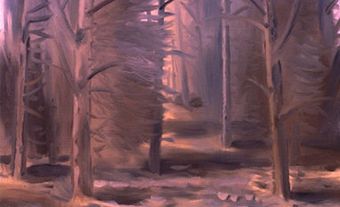Plasticiens, Les
In the mid-1950s, following the excitement generated by the AUTOMATISTES, many Québec artists felt a need to return to a more controlled and ordered style of PAINTING. This sentiment was noticeable in the recent work of Fernand LEDUC, a loyal follower of Paul-Émile BORDUAS and automatism from the beginning. Leduc now felt that automatism had unconsciously held on to a dated concept of pictorial space by maintaining the dichotomy of object and background. A new pictorial movement was launched with the 1955 publication of the Manifeste des plasticiens. Drafted by critic and painter Rodolphe de Repentigny (who signed his paintings with the pseudonym Jauran) and countersigned by Louis Belzile, Jean-Paul Jérôme and Fernand Toupin, it was quite different from the REFUS GLOBAL, which had appeared in 1948. The group had worked out their ideas in 1954 and held an exhibition in February 1955.
The Manifeste des plasticiens encouraged young Québec artists to follow the example of the pioneers of abstract art, in particular that of Mondrian. The Plasticiens preferred a strict use of 2-dimensional space in their paintings. In 1956, Guido MOLINARI (Noirs et Blancs) and Claude TOUSIGNANT (Monochromes) proposed even more radical departures: 2-dimensional surfaces, reversible spaces and the series concept. The Plasticien movement remained a force in the Québec art community; artists such as Yves GAUCHER, Jacques Hurtubise and Charles Gagnon were influenced by it. Only with the rise of postmodernism at the end of the 1960s did the Plasticien movement give way to a new avant-garde in the Québec art world.

 Share on Facebook
Share on Facebook Share on X
Share on X Share by Email
Share by Email Share on Google Classroom
Share on Google Classroom


